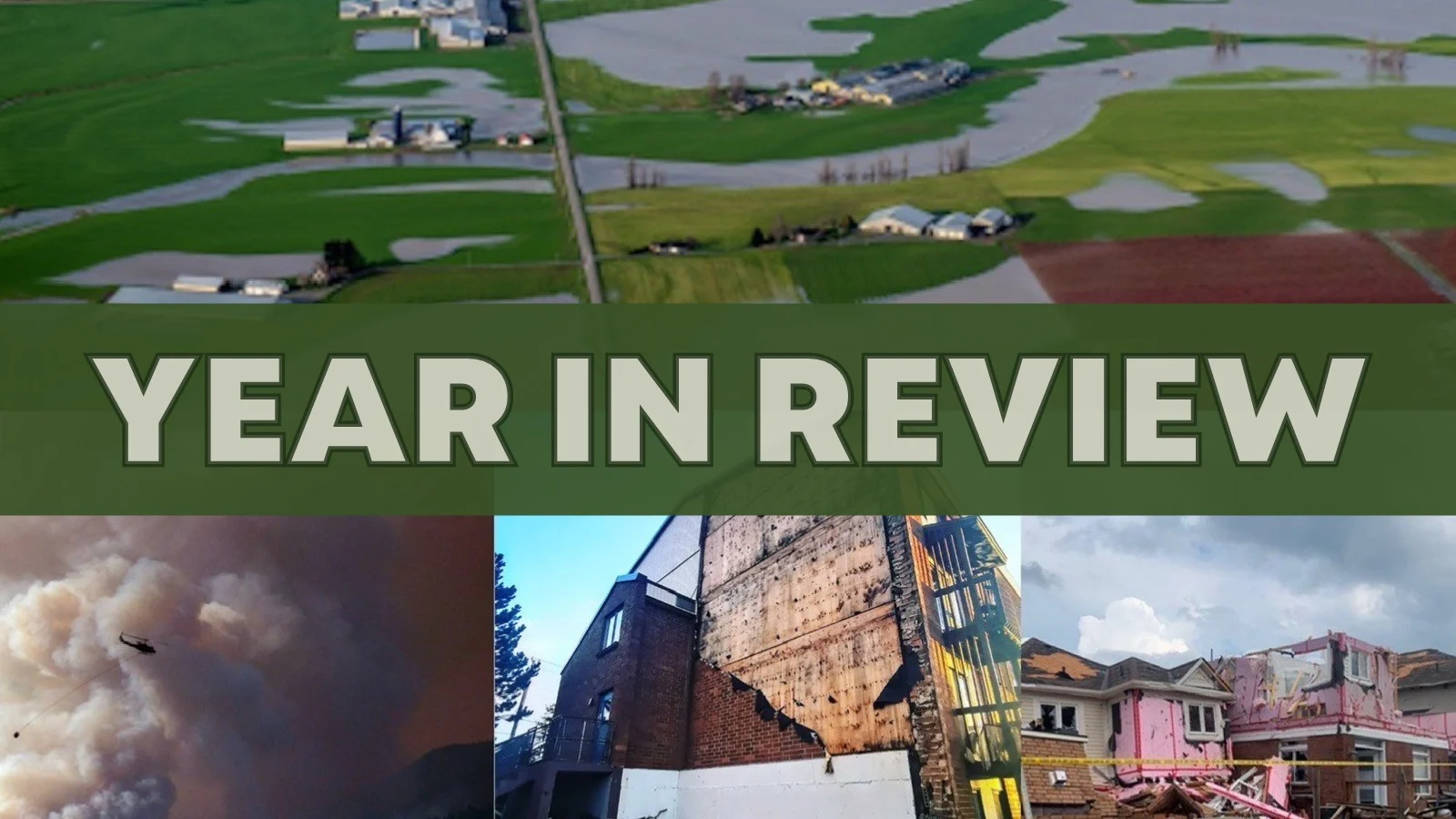
2021 in Canada: The West Coast incurs the wrath of Mother Nature
We take a look back at the past 12 months when Mother Nature wasn't too kind on Canada, particularly on the West Coast, bringing everything it had -- from record wildfires and extreme heat to devastating atmospheric rivers and flooding.
This Day In Weather History is a daily podcast by Chris Mei from The Weather Network, featuring stories about people, communities and events and how weather impacted them.
--
Canada certainly ran through the gamut of disasters in 2021 -- everything from blizzards and floods to droughts, tornadoes and wildfires. Not one part of the country was immune from some kind of impactful weather event this year.
We take a look back at the past 12 months when Mother Nature wasn't too kind on Canada, particularly on the West Coast.
EAST COAST BLIZZARD IN FEBRUARY
While the East Coast was hit with a significant winter storm with blizzard conditions in February, it still wasn't as severe as the epic event that hit Newfoundland in the year prior. Still, parts of the island and Nova Scotia were hit with 50 cm of snow and powerful winds, closing schools and businesses.
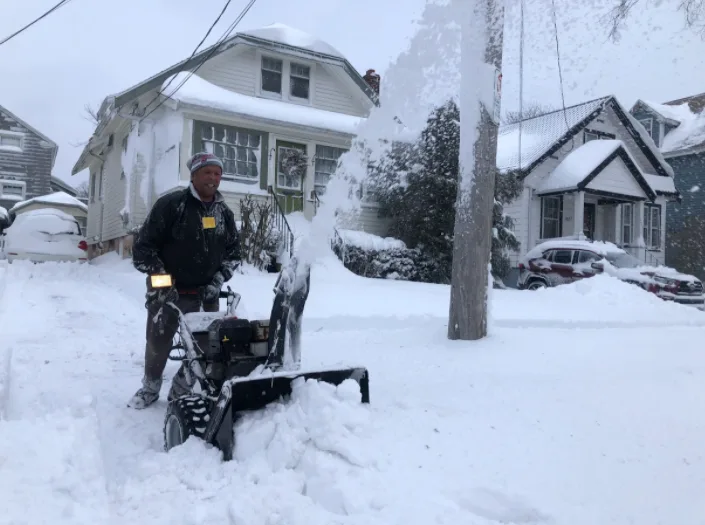
Snow cleanup in Halifax, N.S., in February 2021. (Nathan Coleman/The Weather Network)
LATE-WINTER SNOW SQUALLS BLAST ONTARIO, SHUT DOWN HIGHWAY 400
The beginning to March was kick-started by potent snow squalls in southern Ontario. The lake-effect bands brought treacherous travel conditions, resulting in collisions and highway closures including Highway 400 north of Toronto. Ontario Provincial Police closed a stretch of the highway in the northbound and southbound lanes due to whiteout conditions that led to a crash involving 15 vehicles in the afternoon on March 1.
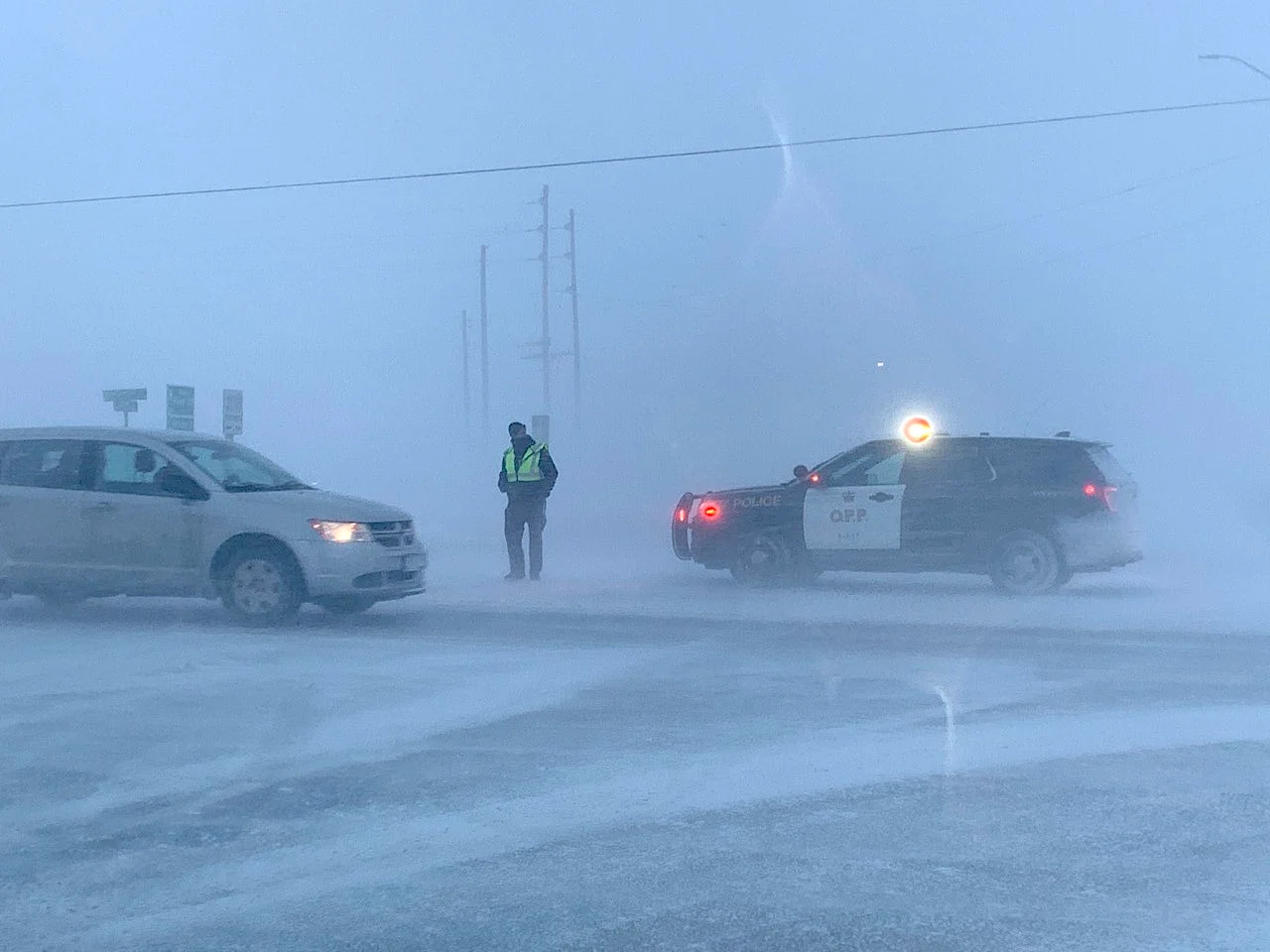
March 1, 2021 snow squalls. (Mark Robinson/The Weather Network)
MONTHS OF DROUGHT ON THE PRAIRIES GET WORSE
Set in motion even before 2021 started, the Prairies were in the middle of a prolonged dry spell. Reported in March, the majority of the region received less than half of its average precipitation over the past three months, which seemed to be the beginning of a devastating period for the farming community.
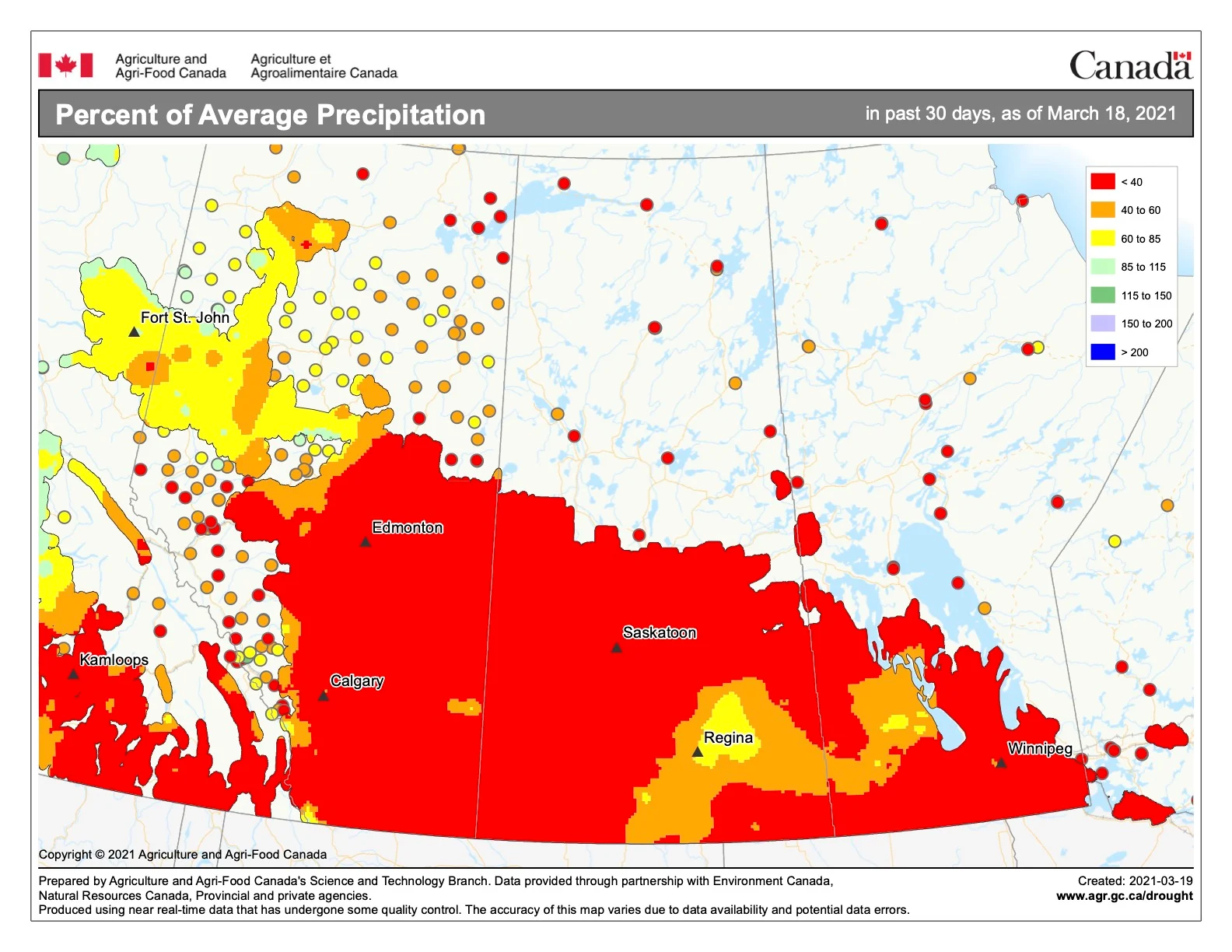
The Prairie provinces were drier than average as it progressed through spring, with multiple atmospheric factors to blame. As the spring transitioned into summer, the unrelenting drought only amplified, with devastating ramifications for farmers.
B.C. ENDURES DEVASTATING AND DEADLY JUNE HEAT WAVE
June was quite the sweltering month for B.C. A prolonged heat wave saw the British Columbia village of Lytton record the country's highest temperature on record three days in a row in June -- hitting 46.6°C (June 27), 47.9°C (June 28) and 49.6°C (June 29).
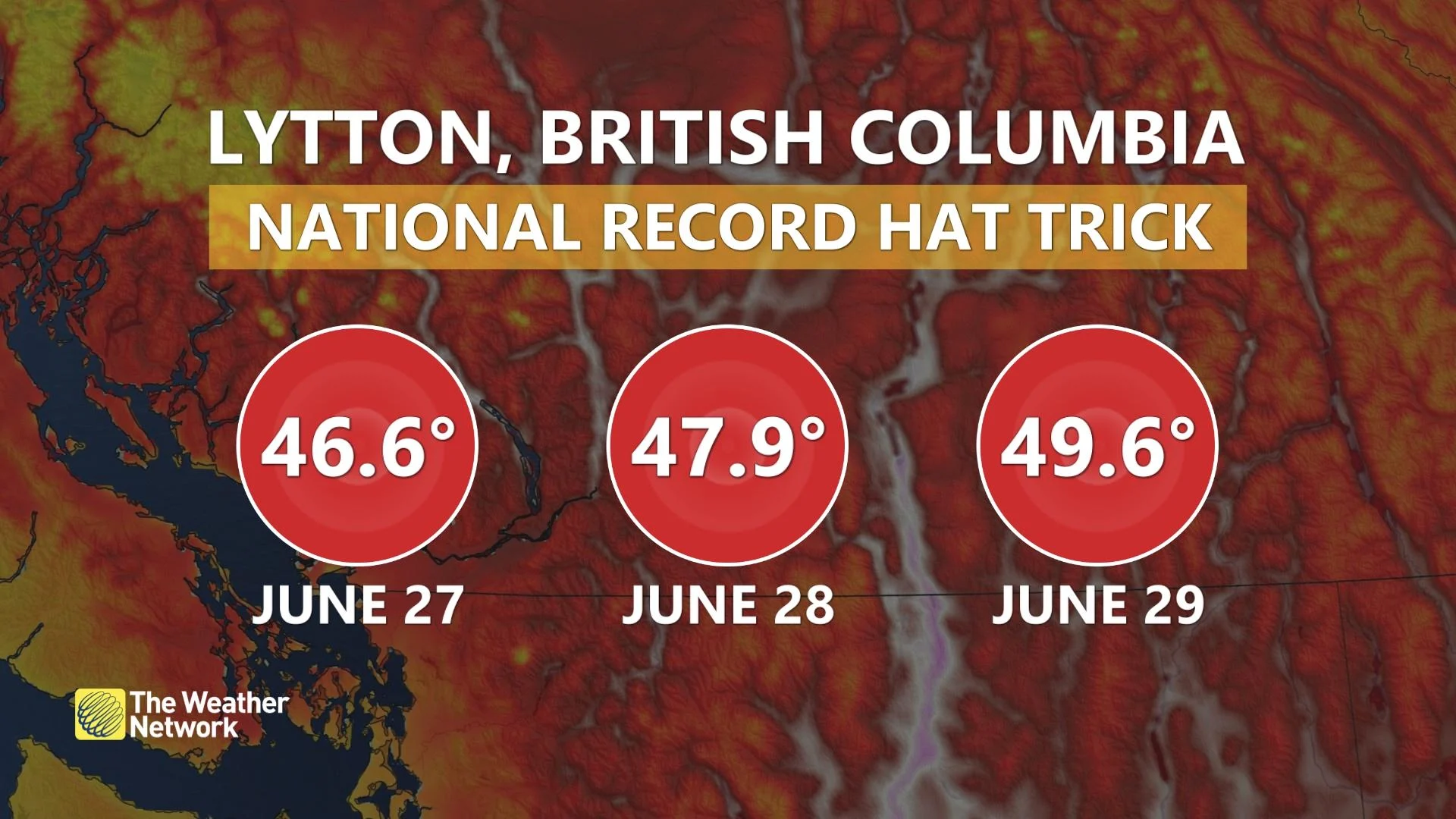
As a result, 595 people perished from B.C.'s unprecedented and record-setting heat, according to a government report. The fatalities were reported to the BC Coroners Service between June 18 and Aug. 12, 2021. In that period of time, the largest number of deaths occurred from June 25 and July 1 during a heat dome event.
B.C.'S HISTORIC WILDFIRE SEASON (JUNE-AUGUST)
In addition to B.C.'s record-breaking and deadly heat in June, the province experienced one of its worst wildfire seasons on record. In particular, it is notable for how close large blazes got to major population centres in the southern Interior.
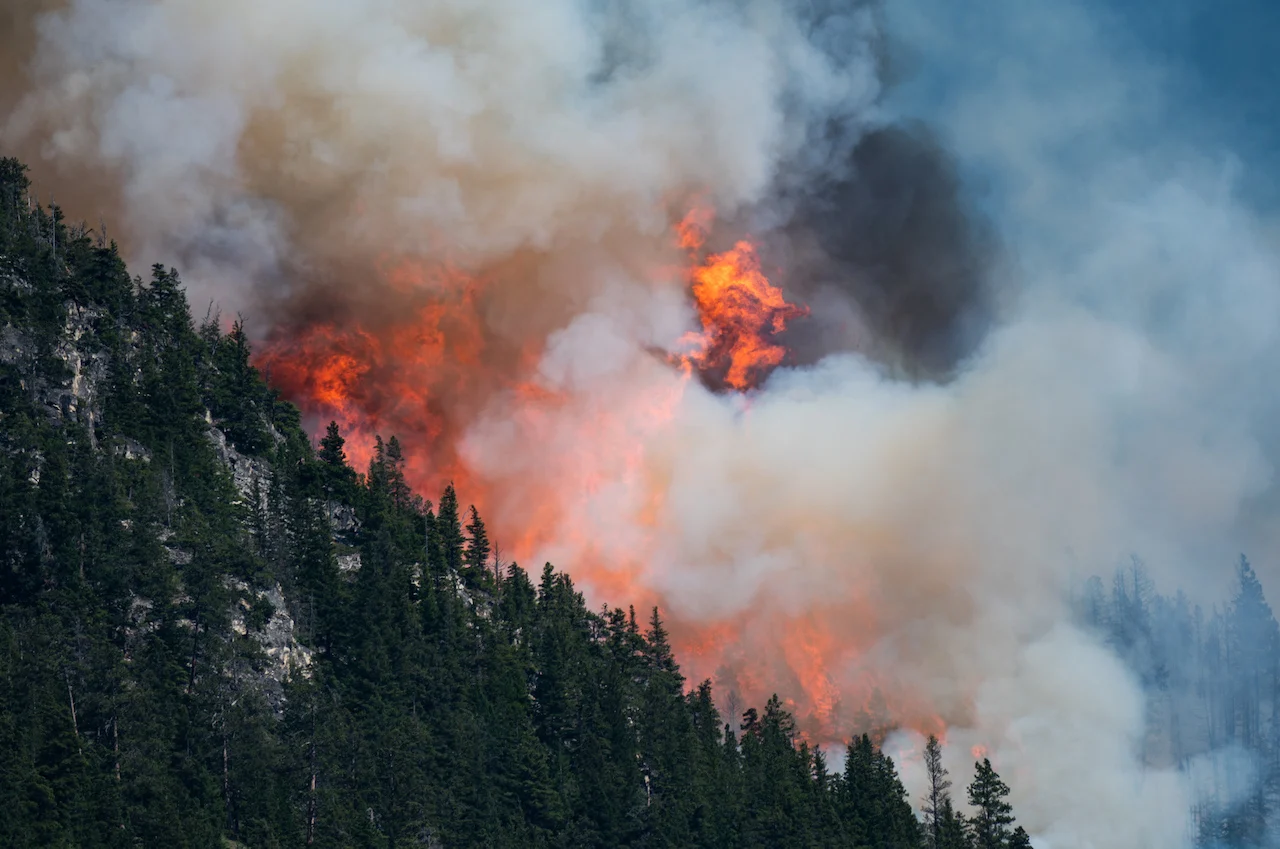
(Kyle Brittain/The Weather Network)
Extreme heat and dry conditions fanned the fires, which led to numerous evacuation alerts and a new total loss of the village of Lytton.
The wildfire in White Rock Lake, B.C., which began in July, was estimated to have caused $77 million in insured damage, according to the initial evaluation from Catastrophe Indices and Quantification Inc. (CatIQ). The fire, which grew to more than 833 square kilometres, destroyed 78 properties in the central Okanagan.
PARTING SHOT OF WINTRY WEATHER IN NEWFOUNDLAND...IN JUNE
Just after seeing a taste of summer days prior (with a daytime high of 27.3°C in St. John's), winter made a bold return to Newfoundland. It felt more like "Juneuary" after an upper trough brought chilly and unsettled conditions as a northwesterly flow took over.
Result: Accumulating June snowfall. Thursday, June 10 was the first time that St. John's recorded more than one cm of snow on a day during the month since 1976.
DEADLY QUEBEC TORNADO
Barely into summer and Canada was hit with a fatal and damaging tornado. The twister that hit Mascouche, Que., near Montreal, caused damage and resulted in one death, confirmed by municipal officials.
A father of three in his 60s was confirmed to have died after a tornado swept through on June 21. As many as 50-100 people were displaced by the tornado, which was rated as an EF-2 on the Enhanced Fujita scale with 180-200 km/h winds.
DAMAGING BARRIE, ONT.,TORNADO BRINGS BACK MEMORIES OF BLACK FRIDAY
The following month saw a destructive tornado plow through the suburbs in Barrie, Ont., surely bringing to mind flashbacks of the deadly May 31, 1985, twister known as Black Friday.
On Thursday, July 15, an EF-2 tornado struck the city in the mid-afternoon as multiple severe thunderstorms exploded and swept through the southern half of Ontario. This prompted multiple tornado warnings including for the Barrie area.
As a result, scores of homes were damaged and 10 people were hospitalized, but there were no fatalities. However, the storms responsible for the Barrie twister ended up producing five others in the province, leading to an estimated $100 million in insured damages.
STORMY SUMMER IN ONTARIO BRINGS A TORNADO OUTBREAK
The wicked summer storms that rocked parts of southern Ontario on Sept. 7 produced several tornadoes, with the official tally now up to nine.
The severe September storms were wide-ranging, with multiple damages reported along with the nine tornadoes, scattered from the shores of Lake Huron to the outskirts of Vaughan. The tally included two EF-2 tornadoes, in the Kingsbridge and Lucknow area, and in the Harriston and Kenilworth area.
HURRICANE LARRY BATTERS NEWFOUNDLAND
With a summer full of wildfires, extreme heat and drought, and tornadoes, it wouldn't be complete without a hurricane thrown into the disaster mix. Hurricane Larry’s powerful winds made a mess when it rolled into eastern Newfoundland in the early morning hours of Sept. 11.
The Category 1 hurricane brought widespread power outages with numerous broken trees, power poles and other structural damage. Notably, a large outdoor performance tent in St. John's suffered extensive damage.
B.C. WOMAN NEARLY HIT BY METEORITE
A charcoal-grey piece of rock, about the size of a melon, fell from space, tearing through a B.C. woman's roof before coming to sit on her floral pillowcase, inches from where her head had been moments earlier. A team of experts at Western University confirmed the rock was a meteorite.
'ULTRA-RARE' TORNADO HITS VANCOUVER IN NOVEMBER
It didn't take long for B.C. to return to weather headlines across the country. On Saturday, Nov. 6, something unexpected occurred: A tornado. B.C. is not a hot spot for tornadoes at any time of the year, so for one to occur there in the heart of fall is certainly a rare occurrence.

Witnesses in Vancouver, B.C., captured video and photos of a tornado over the Strait of Georgia Saturday that came ashore and caused minor tree damage at the University of British Columbia (UBC) and immediate vicinity.
B.C. HIT BY CATASTROPHIC FLOODING, RACK UP MILLIONS IN INSURED DAMAGES
About a week after the Vancouver tornado, B.C. was hit with a series of devastating atmospheric rivers, which became a household term across the country.
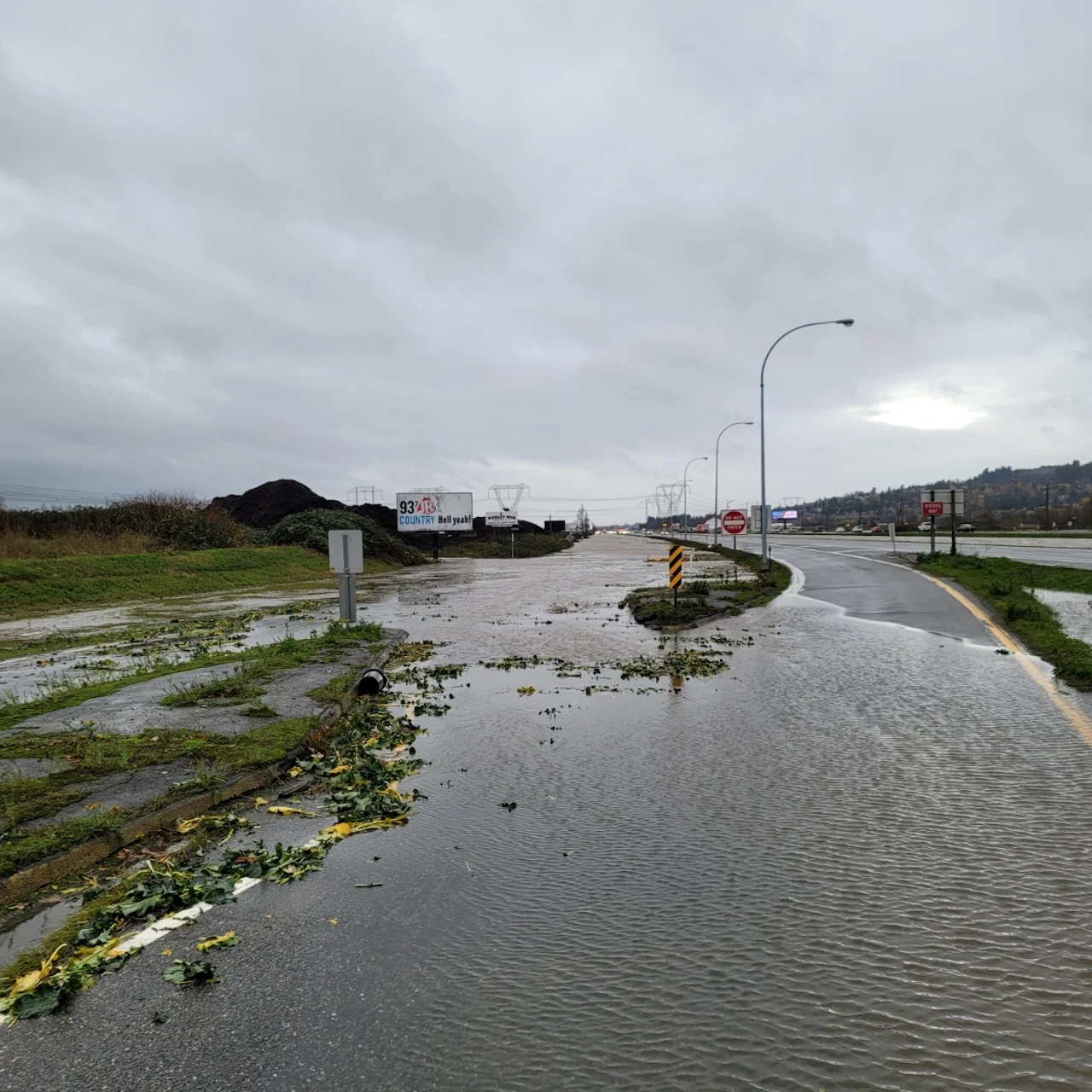
(Abbotsford Police Department/Twitter)
The disaster will be the costliest severe weather event in the province’s history, according to Insurance Bureau of Canada (IBC) -- with a preliminary figure of $450 million in insured damage. The prolonged flooding began with a series of atmospheric rivers near mid-November that brought unprecedented rain to southwestern B.C. over a multi-week period, resulting in mudslides that led to the loss of human and animals lives.
EAST COAST DELUGE BRINGS DESTRUCTIVE FLOODING, COUNTRY 'SANDWICHED' IN BETWEEN ATMOSPHERIC RIVERS
At the same time as B.C. was incurring the wrath of an atmospheric river, so, too, was the opposite end of the country, with the rest of Canada "sandwiched" in between the deluges.
Much of the Maritimes were hit with a tremendous amount of Gulf and subtropical moisture in late November, with numerous lows trekking across. On Tuesday, Nov. 23, the storm knocked out power to thousands across Nova Scotia, the cancellation of crossings and flooding closed several roadways including a section of Highway 245 near Antigonish. Officials at the time stated it could take "days or weeks" to fix flood-damaged parts of Cape Breton.
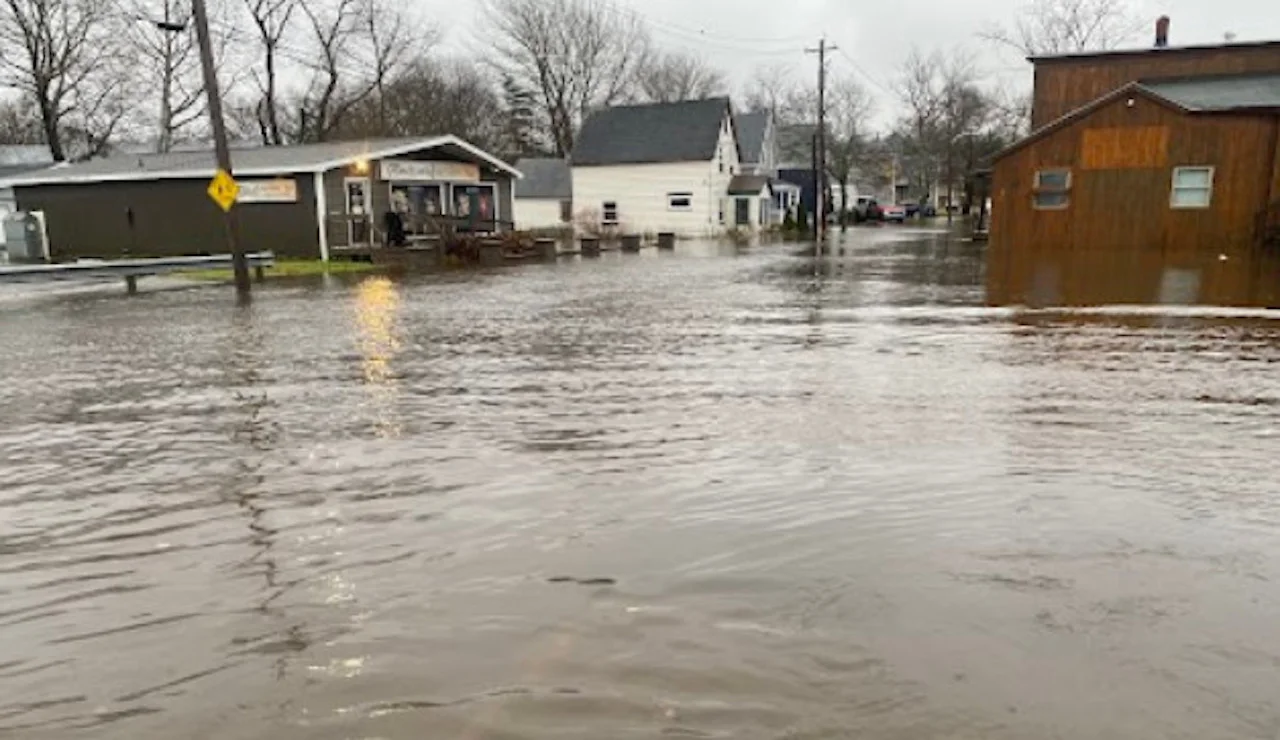
Sydney, N.S., flooding. (Nathan Coleman/The Weather Network)
Ingonish Beach, N.S., set an all-time single-day rainfall record with a final total of 234 mm.
For more top weather stories from 2021, listen to today's podcast. listen to today's episode of "This Day In Weather History."
Subscribe to 'This Day in Weather History': Apple Podcasts | Amazon Alexa | Google Assistant | Spotify | Google Podcasts | iHeartRadio | Overcast'
Thumbnail courtesies: B.C. fire: James MacDonald/ Bloomberg Creative/ Getty Images, B.C. flood: Martin Gregus/@mywildlive, Barrie, Ont., tornado damage: Mark Robinson, Hurricane Larry damage: Maria/@Maria38145259
